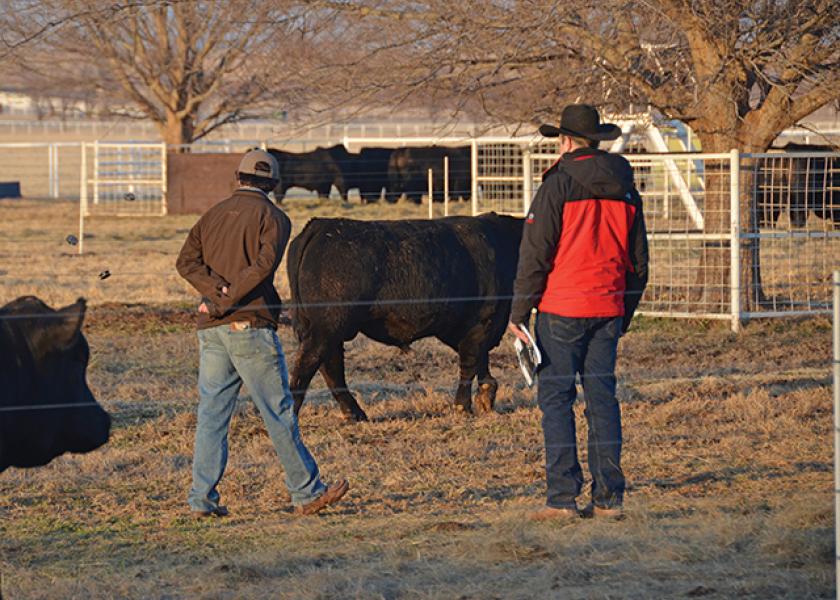Study Up Before Bull Buying

Mailboxes and email inboxes are filling up with bull sale catalogs and announcements. Sifting through all the data, pedigrees and photos can be overwhelming. Here are four considerations to keep in mind when shopping for herd sires:
1. Set job goals. Dan Moser, president of Angus Genetics Inc., advises writing a “job description” for each bull. Start out simple with determining if they’ll be breeding mature cows or replacement heifers. Next, decide if you’ll retain females or if all the
cattle will go to a terminal market, which will impact the traits you target.
“Having that job description written in a fairly detailed manner makes it a lot easier to figure out which traits are important, the ranges for those traits and which index values are valuable in finding the right bull for that job,” Moser says.
2. Consider how to buy genetics. While many producers source their bulls from a traditional auction, consider buying via private treaty or using artificial insemination (AI).
AI opens up a world of possibilities for sourcing genetics. The accuracy of expected progeny differences (EPDs) improves when buying semen because the bull has had the prospect to breed more females.
In addition to semen, AI requires extra labor and synchronization costs versus natural service. Going the AI route also means you’re taking someone else’s word for the physical confirmation of the bull.
If you prefer to physically see a bull, private treaty might be a more fitting option.
At private treaty you usually get a little more personal attention compared with an auction, says Darrh Bullock, beef genetic specialist with University of Kentucky Extension. That often includes a chance to discuss goals with the seedstock operator and see their herd.
Private treaty can reduce the anxiety of having to bid on a bull and the worry if you need to stay on budget.
3. Know your values. Index values offered by breed associations take into account genetic and economic values to select for economic merit. They should be used to complement the particular traits you’re hoping to improve in your herd and job goals.
Bullock says it’s important to know what traits go into index values. “Indexes are specific to marketing and management situations, so make sure they match pretty close to your situation,” he says.
It’s a bonus if bulls have had a genomic test, which will increase the accuracy of the EPD traits and index values you’re selecting for.
4. Find the right fit. After going through all the data it’s a good idea to get in the pen with some bulls. Moser and Bullock suggest focusing on feet and legs, good angles through the shoulder and level tops. This ensures better longevity for the bull so he can do his job. The traits are also moderately heritable, which is important if you’re going to keep heifers out of a bull, Bullock says. Picking bulls with good muscling might be more of a focus for a terminal herd but not as vital if retaining heifers to breed.







